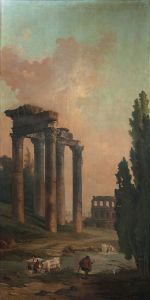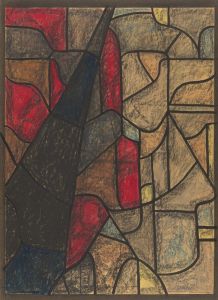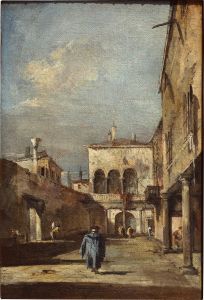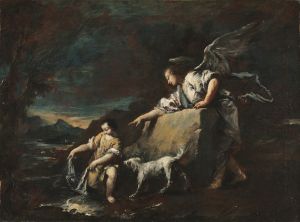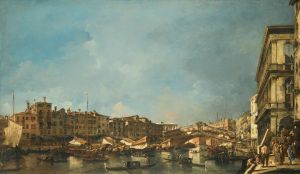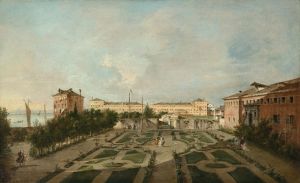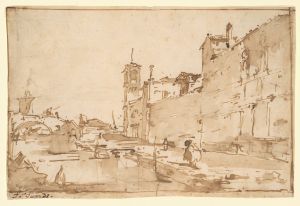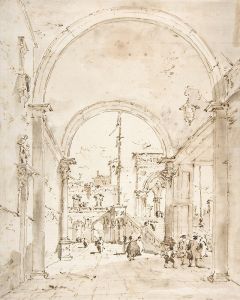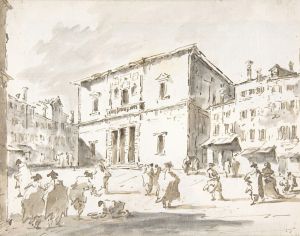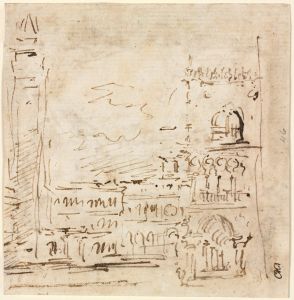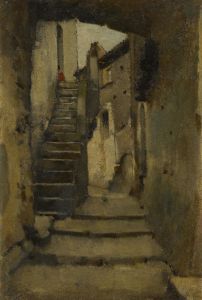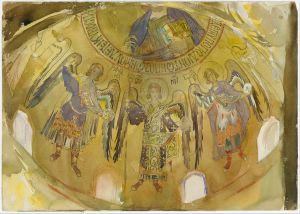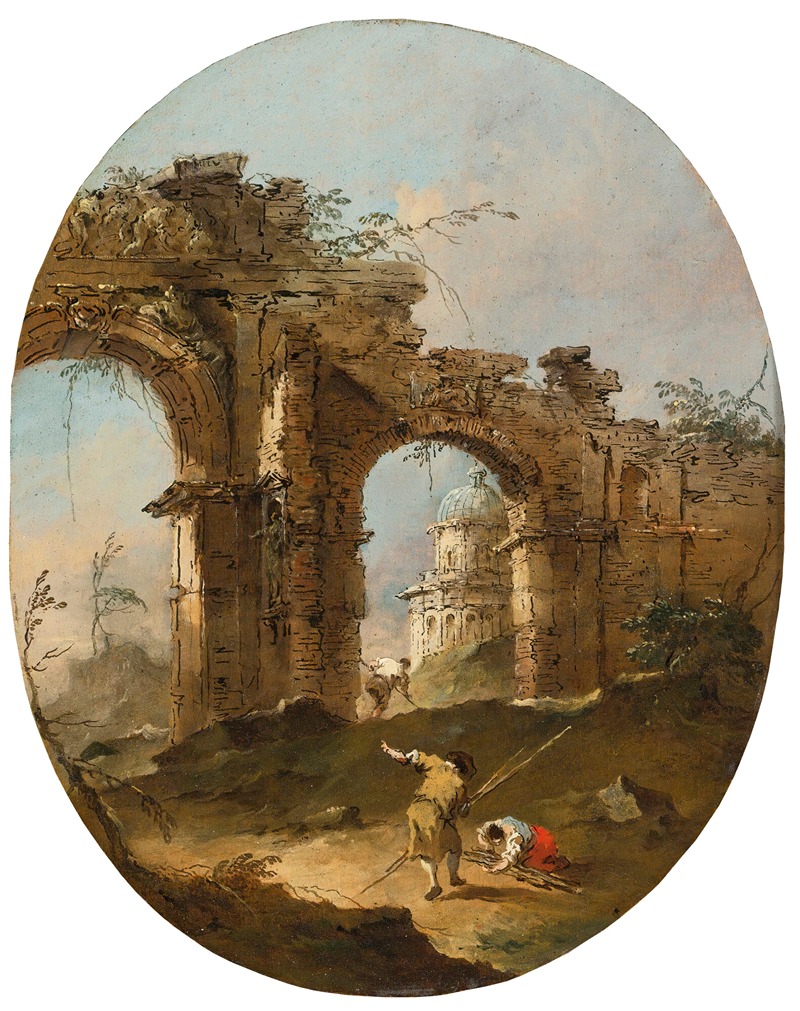
An Architectural Capriccio With Figures By A Ruined Arch
A hand-painted replica of Francesco Guardi’s masterpiece An Architectural Capriccio With Figures By A Ruined Arch, meticulously crafted by professional artists to capture the true essence of the original. Each piece is created with museum-quality canvas and rare mineral pigments, carefully painted by experienced artists with delicate brushstrokes and rich, layered colors to perfectly recreate the texture of the original artwork. Unlike machine-printed reproductions, this hand-painted version brings the painting to life, infused with the artist’s emotions and skill in every stroke. Whether for personal collection or home decoration, it instantly elevates the artistic atmosphere of any space.
Francesco Guardi, an eminent Venetian painter of the 18th century, is renowned for his captivating vedute, or cityscapes, and capricci, which are imaginative landscapes. One of his notable works, "An Architectural Capriccio With Figures By A Ruined Arch," exemplifies his skill in blending real and imaginary elements to create evocative scenes that capture the viewer's imagination.
Born in Venice in 1712, Guardi was part of a family of painters. He was heavily influenced by the Venetian tradition and the works of his contemporaries, including Canaletto, another master of vedute. While Canaletto was known for his precise and detailed depictions of Venice, Guardi's style evolved to become more atmospheric and expressive, often characterized by a looser brushwork and a more romantic interpretation of the city and its surroundings.
"An Architectural Capriccio With Figures By A Ruined Arch" is a quintessential example of Guardi's capriccio paintings. In this work, Guardi presents an imaginative scene that combines architectural elements with figures, set against the backdrop of a ruined arch. The painting does not depict a specific real-world location but rather an invented landscape that draws on classical architectural motifs and the picturesque decay that was popular in the art of the time.
The composition is carefully balanced, with the ruined arch serving as a focal point. This element is rendered with a sense of grandeur and nostalgia, evoking the passage of time and the remnants of a once-glorious past. The figures in the painting, though small in scale, add a narrative dimension to the scene. They are depicted engaging in various activities, which brings life to the otherwise static architectural elements and invites the viewer to imagine the stories behind these characters.
Guardi's use of light and shadow in this painting is particularly noteworthy. He employs a delicate interplay of illumination to enhance the mood of the scene, creating a sense of depth and atmosphere. The soft, diffused light suggests a time of day that is either early morning or late afternoon, adding to the painting's romantic and contemplative quality.
Throughout his career, Guardi's capricci were highly sought after by collectors who appreciated their imaginative qualities and the way they captured the spirit of Venice and its environs. His works are celebrated for their ability to transport viewers to a world that is both familiar and fantastical, a testament to Guardi's creative vision and technical prowess.
Today, Francesco Guardi is regarded as one of the last great painters of the Venetian school. His capricci, including "An Architectural Capriccio With Figures By A Ruined Arch," continue to be admired for their artistic merit and their ability to evoke the beauty and mystery of a bygone era. Guardi's paintings are housed in major museums and collections around the world, where they continue to inspire and captivate audiences with their timeless charm and imaginative vision.





